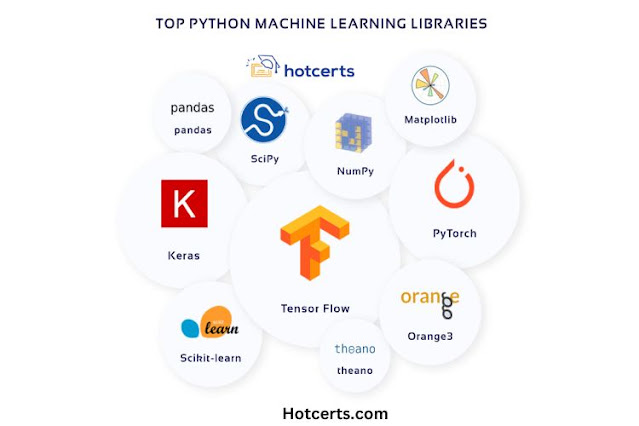10 Best Python Libraries for Machine Learning and AI!
Introduction:
Python is one of the most popular programming languages for machine learning and artificial intelligence. It has a vast ecosystem of libraries and frameworks that make it easier to develop machine learning and AI applications. In this blog, we will explore the 10 best Python libraries for machine learning and AI.
- TensorFlow
TensorFlow is an open-source machine learning library developed by Google. It is used for building and training deep learning models. It provides a high-level API and supports a wide range of platforms and languages.2. Keras
Keras is a high-level neural networks library that is built on top of TensorFlow. It provides a simple and easy-to-use interface for building and training deep learning models. Keras supports a wide range of neural network architectures and allows for easy experimentation.
3. PyTorch
PyTorch is an open-source machine learning library developed by Facebook. It is used for building and training deep learning models. PyTorch provides a dynamic computational graph and supports a wide range of platforms and languages.
4. Scikit-learn
Scikit-learn is a popular machine learning library that provides a wide range of algorithms for classification, regression, clustering, and dimensionality reduction. It is built on top of NumPy, SciPy, and Matplotlib.
5. Pandas
Pandas is a popular data manipulation library that provides data structures for efficiently storing and manipulating large datasets. It is built on top of NumPy and provides tools for data cleaning, preparation, and analysis.
6. NumPy
NumPy is a fundamental library for scientific computing in Python. It provides a powerful N-dimensional array object and tools for working with arrays. NumPy is used extensively in machine learning and AI applications.
7. Matplotlib
Matplotlib is a popular data visualization library that provides tools for creating high-quality charts, graphs, and plots. It is built on top of NumPy and provides support for a wide range of plots and visualizations.
8. Seaborn
Seaborn is a data visualization library that provides a high-level interface for creating beautiful and informative statistical graphics. It provides support for many types of plots, including heatmaps, violin plots, and scatter plots.
9. NLTK
NLTK (Natural Language Toolkit) is a popular library for natural language processing in Python. It provides tools for tokenization, stemming, tagging, parsing, and machine learning for text analysis.
10. OpenCV
OpenCV (Open Source Computer Vision Library) is a popular library for computer vision applications. It provides tools for image and video processing, object detection, and machine learning for computer vision.
Conclusion:
Python has a huge biological system of libraries and structures that make it easier to develop machine learning and AI applications. The 10 libraries we have discussed in this blog are some of the most popular and widely used libraries for machine learning and AI. By using these libraries, you can build powerful and sophisticated machine learning and AI applications with ease. Recall that the way to becoming capable inthese libraries is to practice and experiment with them in real-world applications.


.jpg)
Comments
Post a Comment